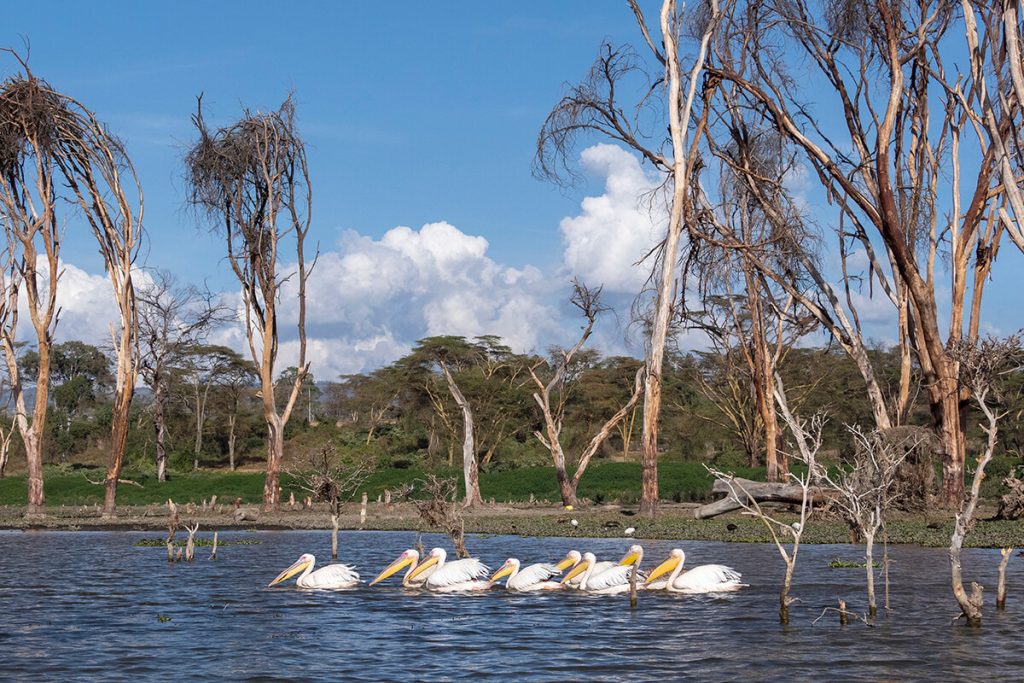Samburu National Reserve, located in central Kenya, is one of the most unique places to go on a safari in Kenya. While it may not be as popular as other reserves, often being overlooked due to its distance from typical tourist circuits, it is highly recommended to visit if you have the time.
The 165 km² Samburu National Reserve features landscapes and wildlife that are distinctive to this region. Palm trees and river forests, set in arid and semi-arid ecosystems, create a magnificent scenery. Water is scarce, and often its main river, the Ewaso Ngiro, runs completely dry. In these cases, only elephants can find water by digging deep holes, which other species then use.
Additionally, as a national reserve, it is managed by local communities, making a visit to Samburu not only an adventure but also a way to support conservation efforts and the local community.
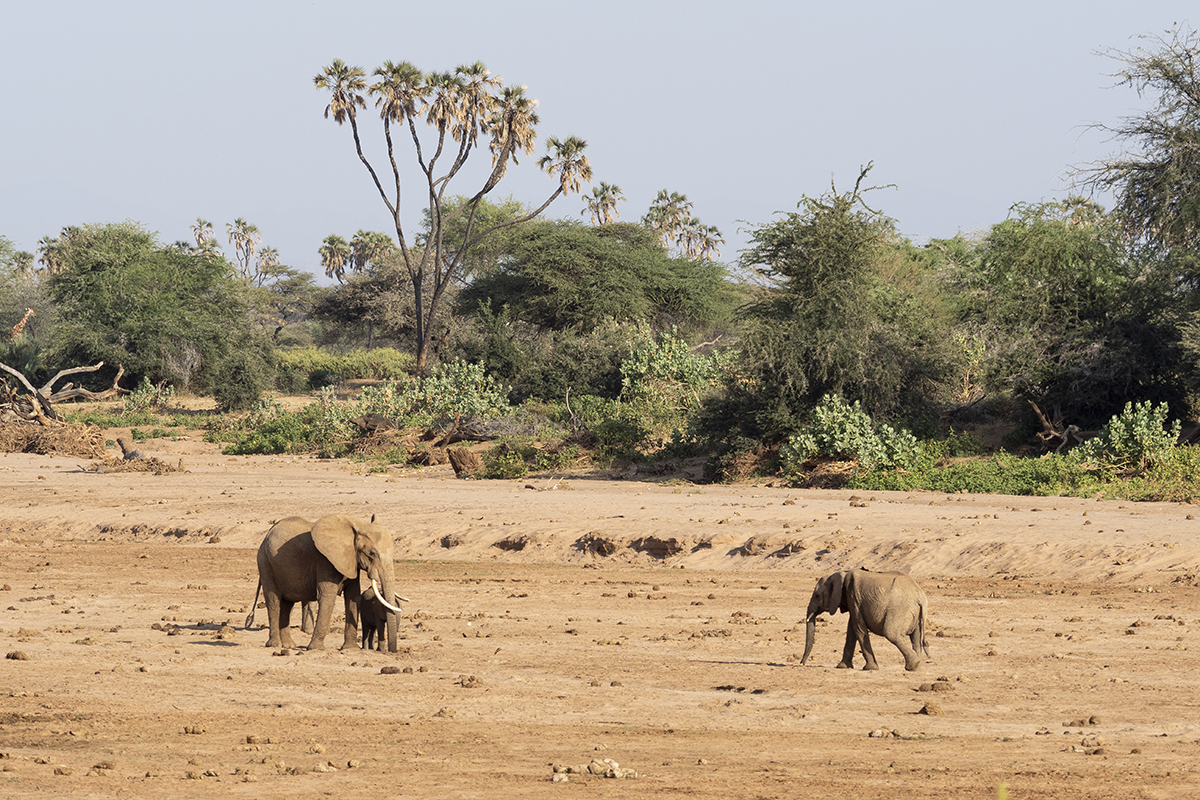
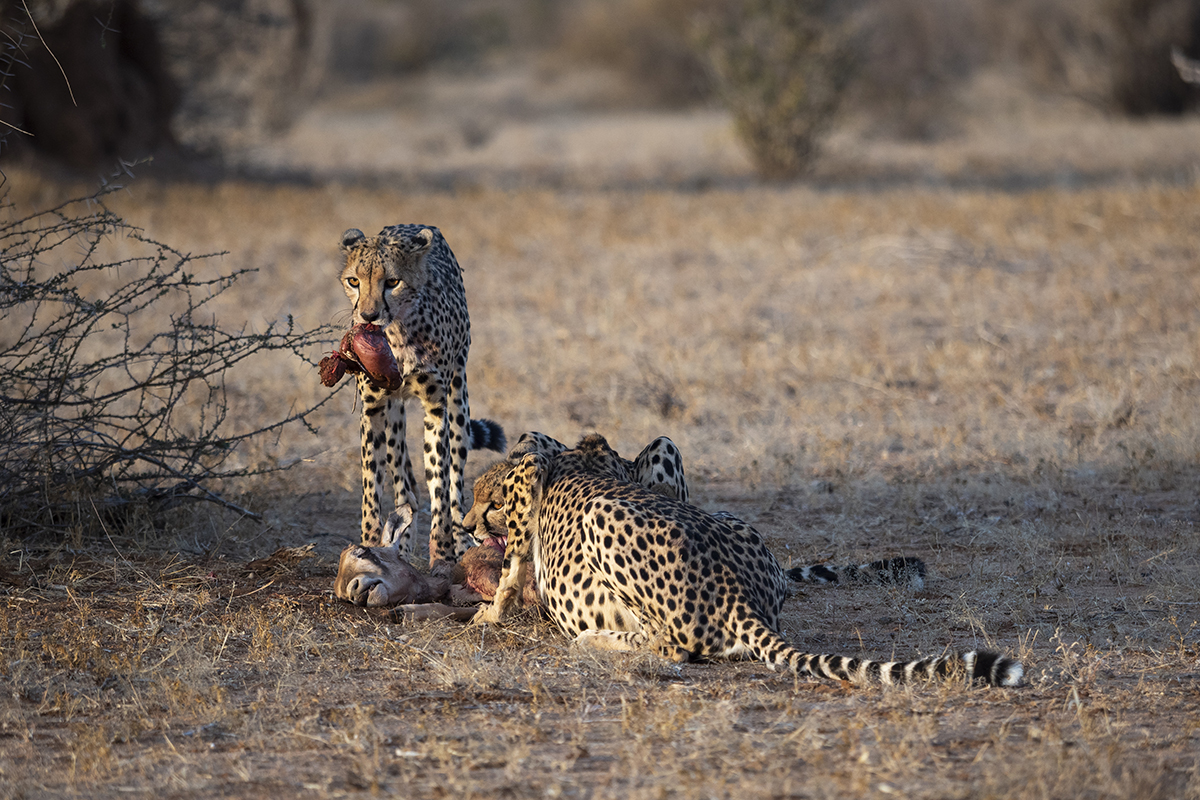
Where is Samburu National Reserve?
This national reserve is located in Laikipia County, in the center of the country. From Nairobi to the main entrance of the reserve, Archer’s Gate, it’s about 315 kilometers and approximately 7 hours of driving. To get there from Nairobi, you can consider the following options:
Book a tour that includes transport, accommodation, and game drives in the reserve. You can choose a tour that focuses only on the Samburu National Reserve, or one that includes other parks in the country. If you choose this option, I recommend using this form to contact trusted local operators. Another option is to organize transport and safaris directly through your accommodation in Samburu.
Rent a 4×4 in Nairobi and drive to Samburu. This is a good option if you want to do the game drives in the reserve with your own vehicle. Depending on the rental agency, you can also rent the car with a driver. You can find more information about this in the post about my independent trip to Kenya.
Rent a 4×2 in Nairobi and drive to Samburu. The roads up to the park gate are in good condition, and any type of vehicle can make the journey. In this case, you’ll need to book the game drives through your accommodation.
Reach the reserve using public transport (minibus or matatu). With this option, you can only get as far as Archer’s Post, the nearest town. From there, the easiest way is to organize a transfer to the reserve through your accommodation.
If you’re driving to Samburu National Reserve, consider making a stop at Ol Pejeta Conservancy, one of the best places in Kenya to see both black and white rhinos.
💡 Get a Free Quote for Your Trip to Kenya with Trusted Local Operators
If you’d like to plan your trip to Kenya with reliable local tour operators, I can help you connect with the best ones. Just fill out this quick form, and based on the type of safari you’re looking for, I’ll match you with the most suitable local agencies. I’ll also be available to answer any questions throughout the planning process — so your safari will be stress-free, authentic, and truly unforgettable!
How much does a safari in Samburu National Reserve cost?
To access Samburu National Reserve, the following entrance fees apply:
Foreign visitors: $70 (adults) and $40 (children aged 3 to 11)
East African residents: 1,000 KES
Kenyan residents: 500 KES
This fee grants access to the reserve for 24 hours, and during this time, you are allowed to exit and re-enter the park.
The most common entry point to Samburu is through Archer’s Gate, where the entrance fee must be paid in cash.
If you’re doing a safari in Samburu National Reserve with a tour operator, the entrance fee is usually included in the package price, so you won’t need to worry about this part of the logistics. In these cases, the total cost is typically between $170 and $300 per person per day, including meals, game drives, accommodation, and park fees.
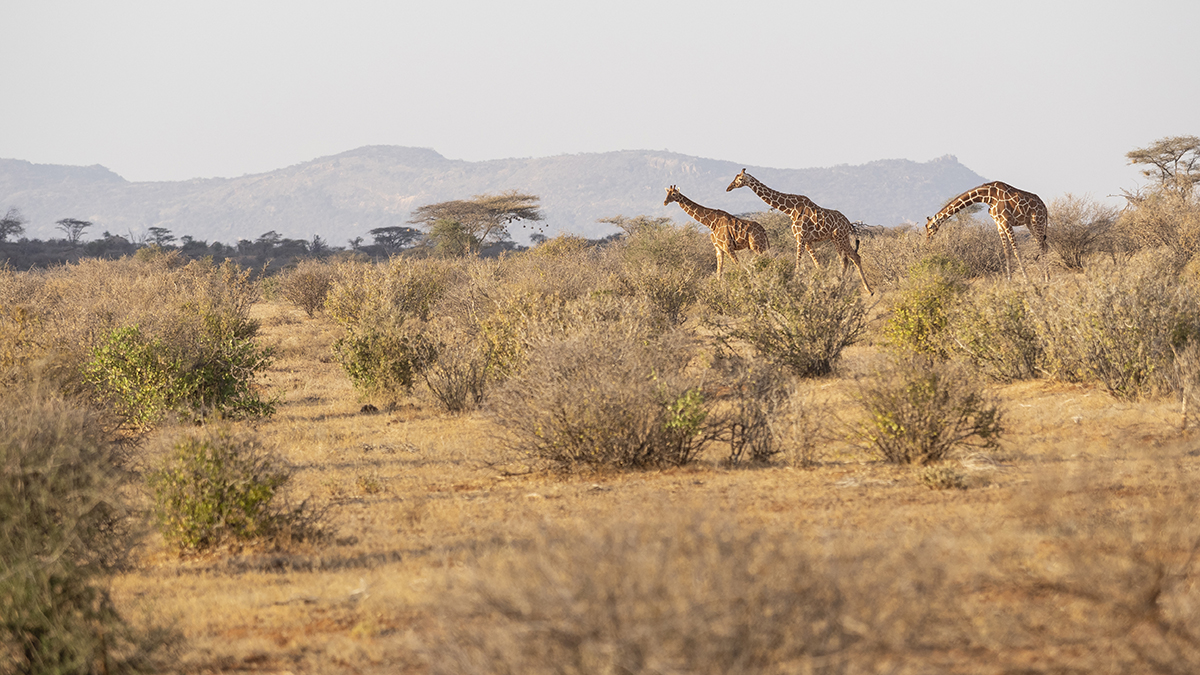
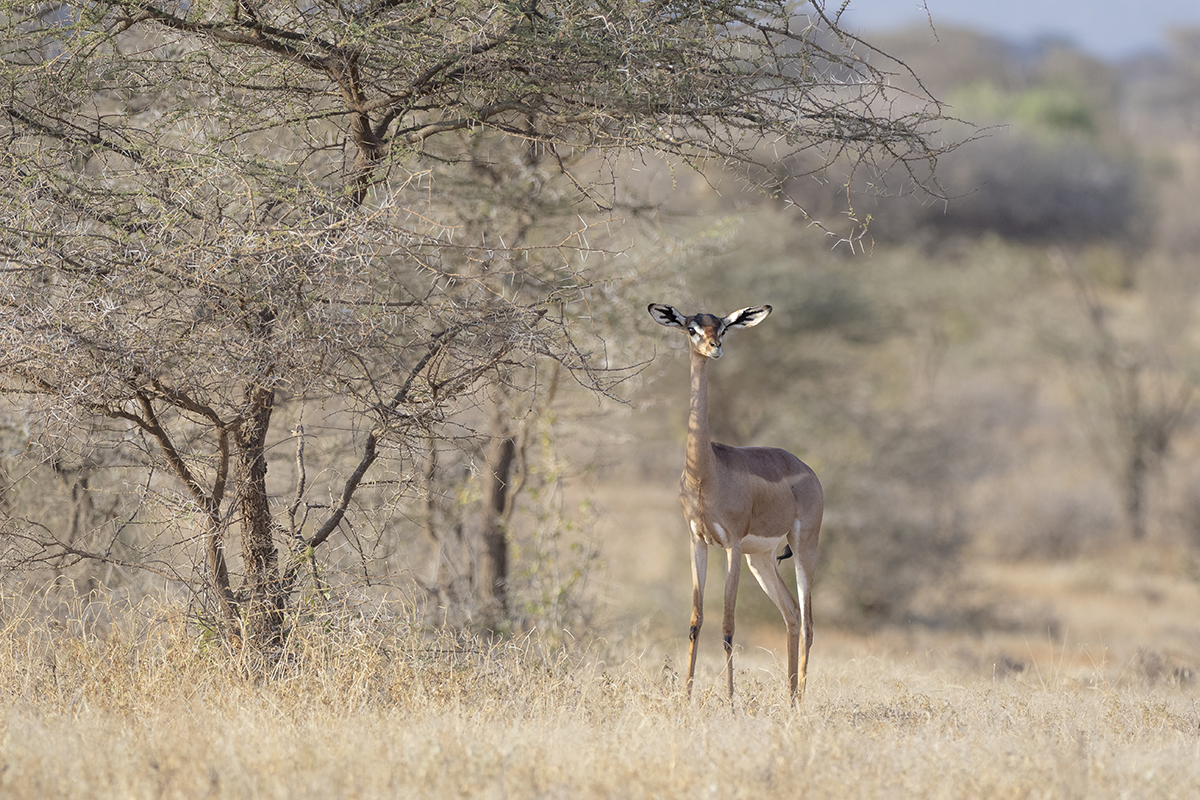
What animals can be seen during a safari in Samburu?
The semi-arid climate of this reserve allows for the presence of some species that cannot be found anywhere else in Kenya. That is why safaris in Samburu often focus on the Special 5. These are five animals that cannot be seen in any other Kenyan reserve. Specifically, they are the reticulated giraffe, Grévy’s zebra, giraffe antelope (gerenuk), oryx, and Somali ostrich.
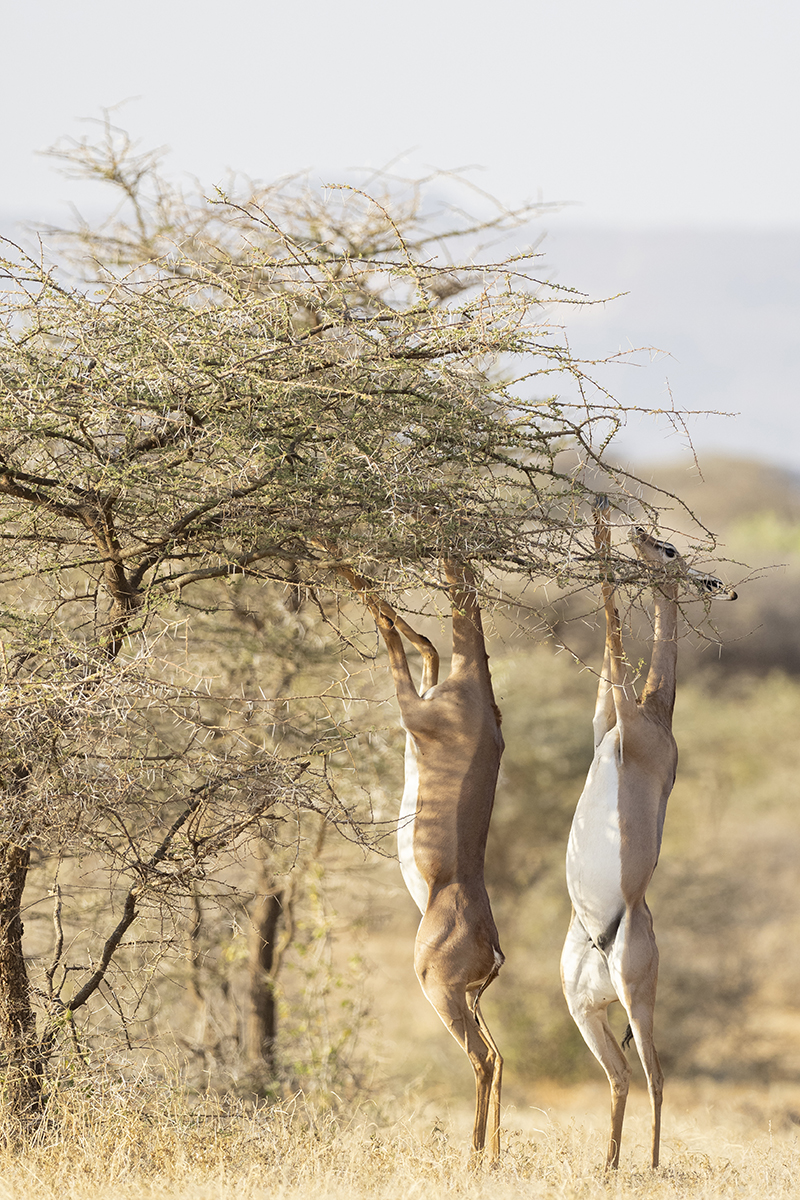
Additionally, during a safari in Samburu National Reserve, you can often see many elephants. They usually move along the Ewaso Ngiro River, digging holes to access water. The waterholes created by the elephants are then used by other antelopes in the reserve, such as impalas, Thomson’s gazelles, and small dik-diks.
Regarding predators, the three big African cats can be seen: lion, cheetah, and leopard. Although leopards are difficult to spot, they often allow themselves to be photographed. In fact, the Samburu area is known as one of the best places in Kenya to see leopards. Lions can be seen occasionally, and cheetahs are quite rare. Occasionally, there are also sightings of African wild dogs.
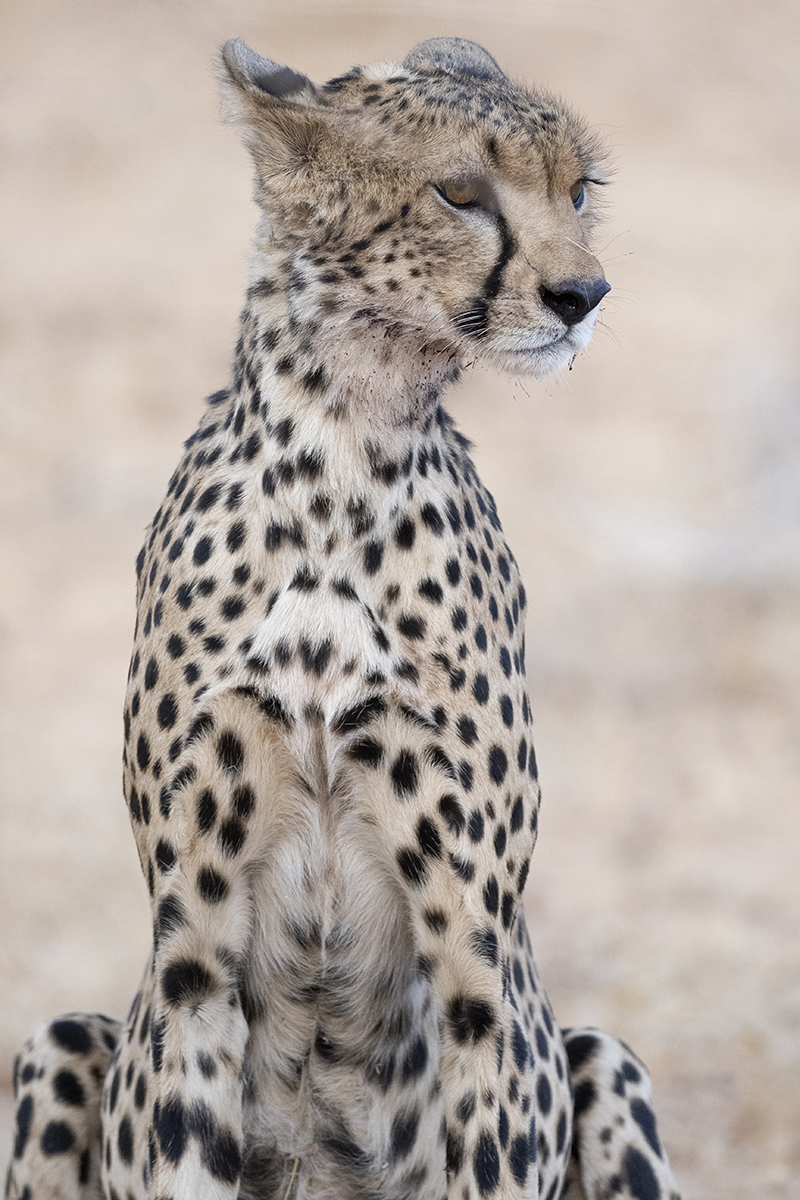
Also, during safaris you can see a great variety of birds. Up to 390 species have been recorded there. Some of the most notable are the vulturine guineafowl, Somali bee-eater, royal starling, and martial eagle.

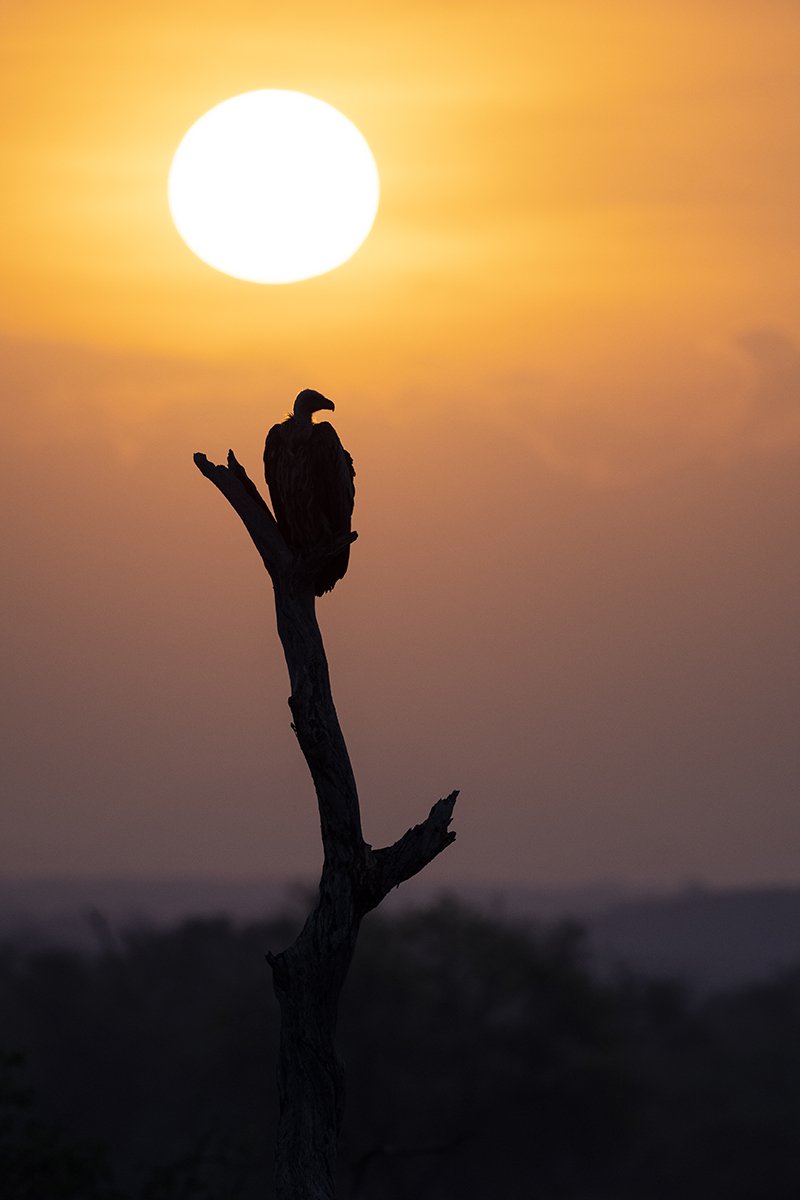
When is the best time to visit Samburu?
Samburu National Reserve can be visited year-round, and safaris are usually productive throughout. However, the dry season months (from June to September and January to February) tend to be better.
During the rainy months, there can be heavy rainfall over a short period. Additionally, there is more vegetation and the wildlife tends to be more dispersed.
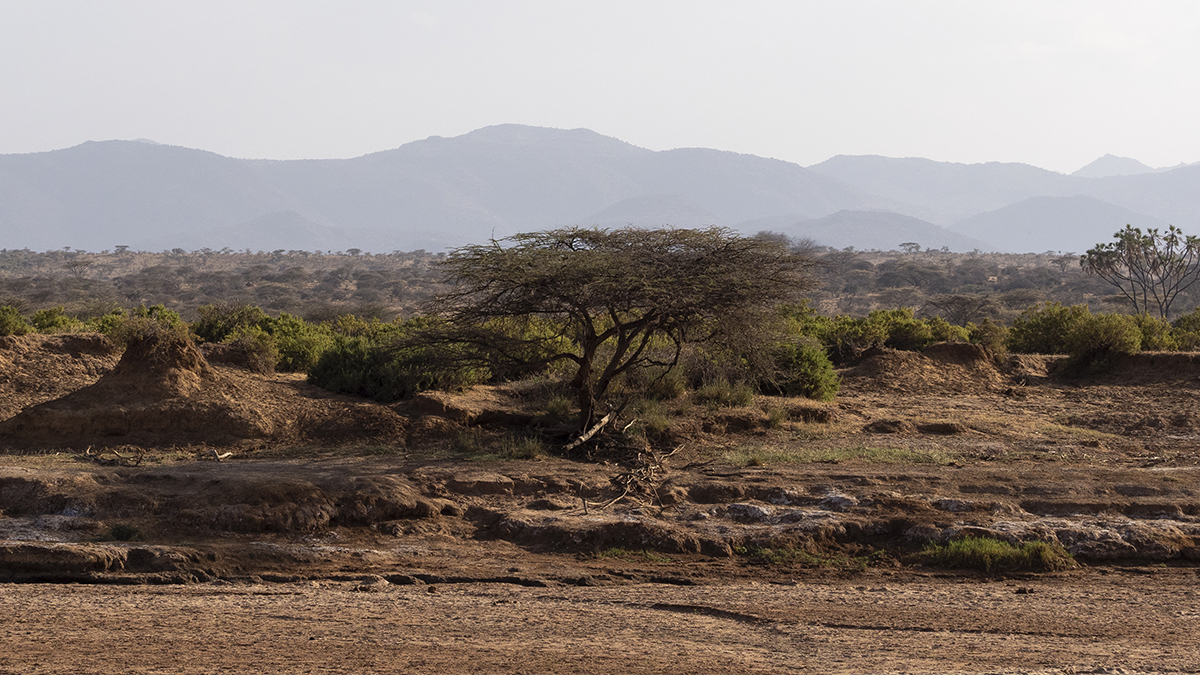
What are the check-in and check-out times?
The reserve gates open at 6 a.m. and close at 6 p.m. Outside of these hours, it is not permitted to drive within the reserve.
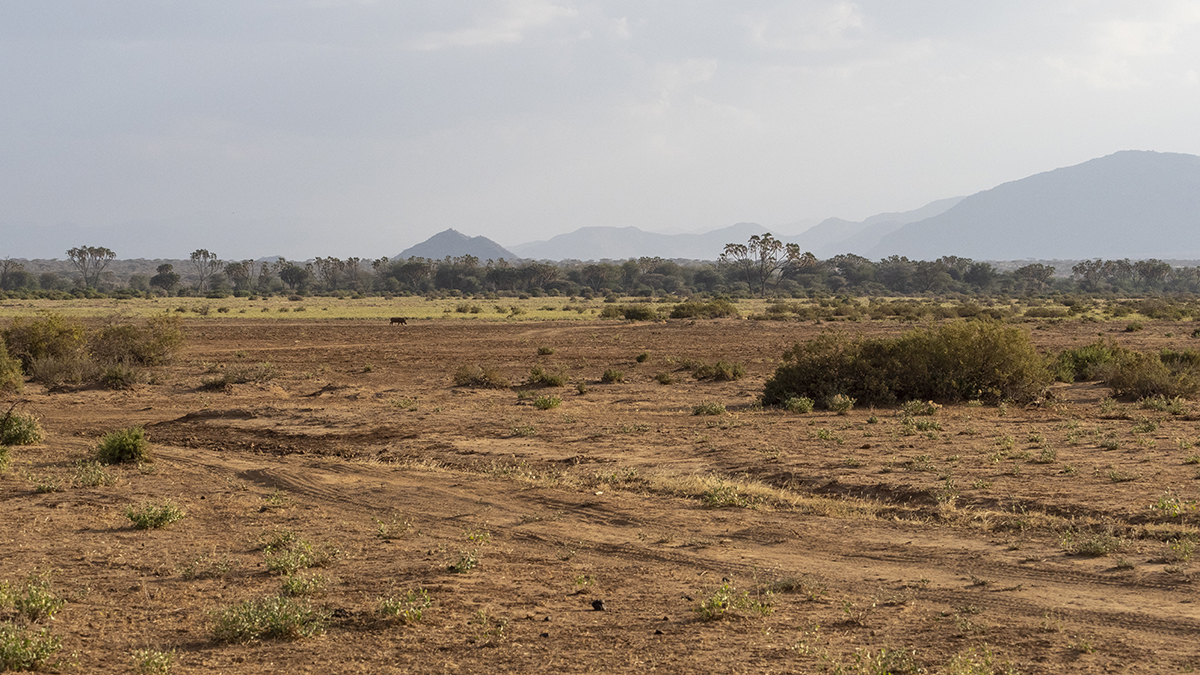
What to do in the Samburu area?
Go on a Safari in Samburu National Reserve
The main reason to visit this reserve is usually to go on a safari, exploring the semi-arid landscapes of the area and seeing the animals that inhabit it.
Although safaris can be done throughout the day, especially during the dry season it is more advisable to focus on the early morning and late afternoon hours. In the morning, the first four hours of daylight can be well enjoyed. After that, it gets quite hot and there is little activity. In the afternoon, the last three hours before sunset tend to be the most interesting.
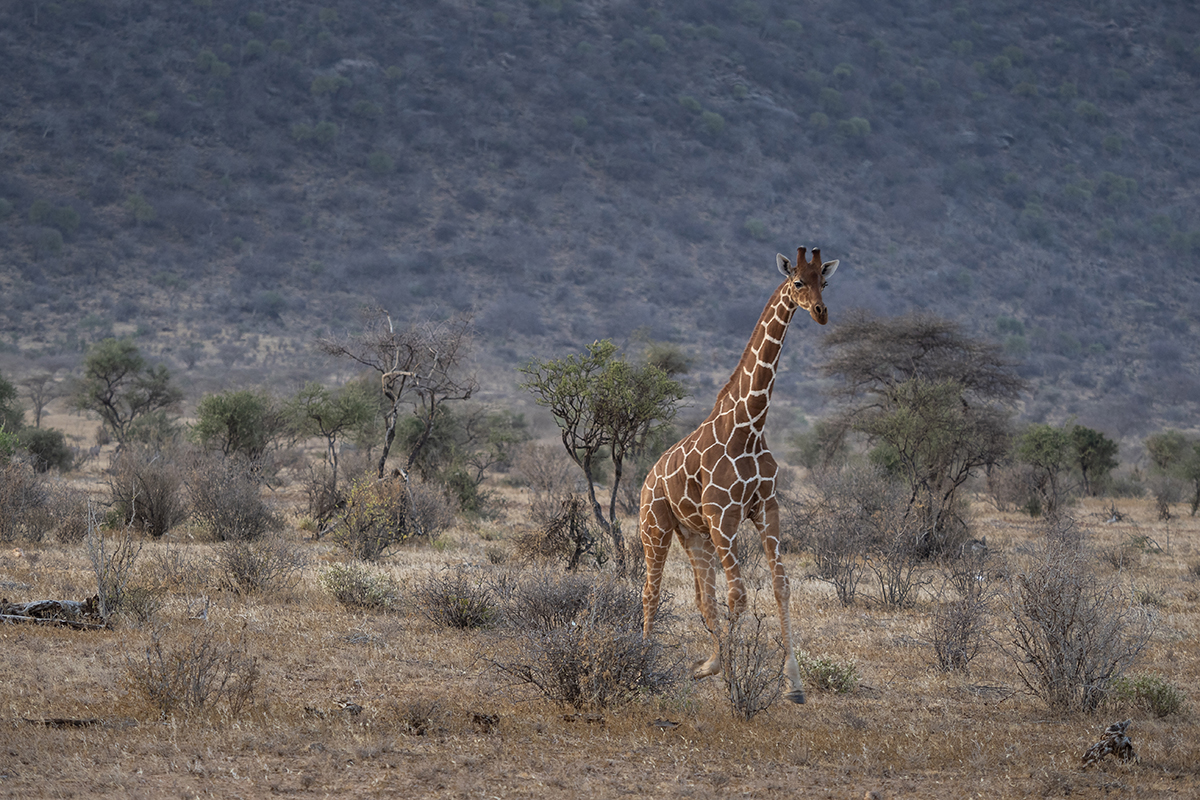
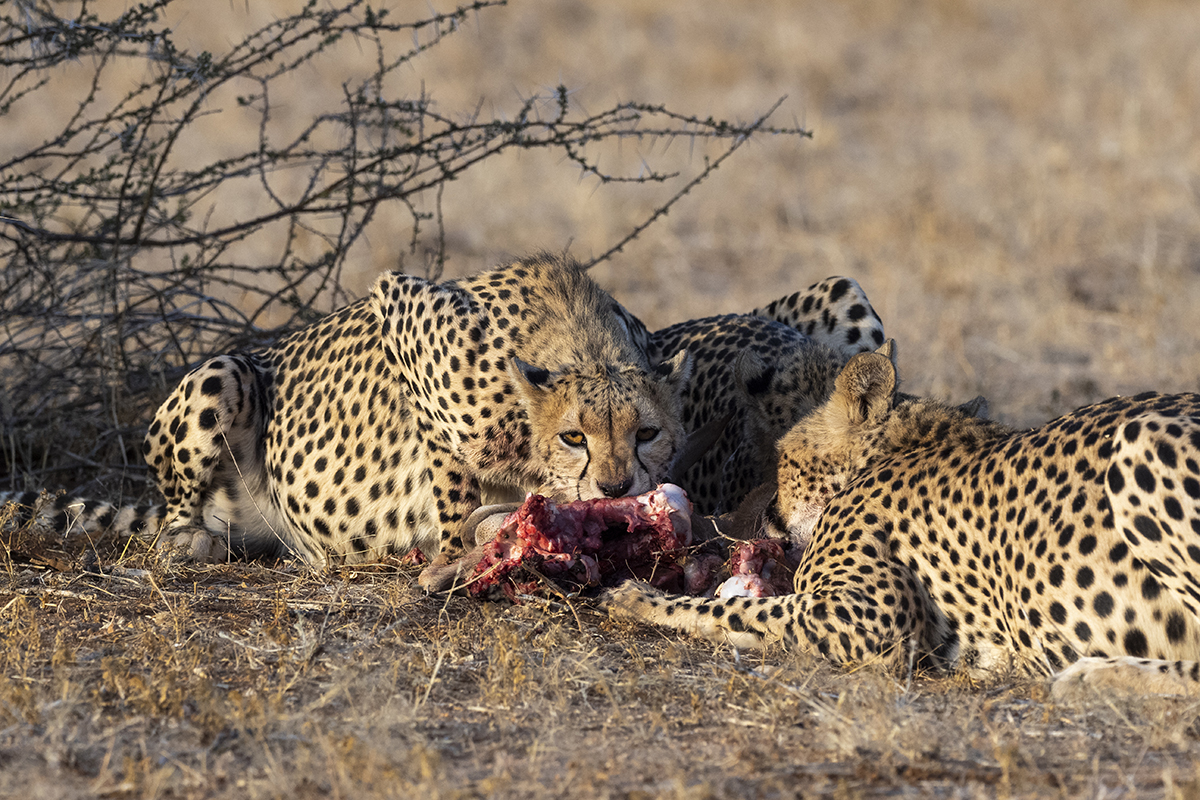
Go on Safari in Other Reserves Near Samburu
Samburu National Reserve is connected to two other national reserves: Buffalo Springs National Reserve and Shaba National Reserve. The three reserves share a very similar ecosystem and the same wildlife. Samburu is probably the area with the highest wildlife density, but if you have more than two or three days, it is also worth visiting the Buffalo Springs or Shaba areas.
Buffalo Springs Reserve is quite famous for leopard sightings. Shaba Reserve has fewer animals, but the landscape is very scenic.
Visit Umoja Uaso Village
Umoja Uaso is a small village located near Samburu National Reserve. The unique feature of this small community is that only women and children are allowed to live there.
Currently, the village can be visited to learn about its history and current situation. It is recommended to go accompanied by a guide.
Climb Mount Ololokwe
Mount Ololoke is a sacred mountain in Samburu tradition. From its summit, you get one of the best views of the region.
It is a challenging hike, with more than 1,000 meters of elevation gain. It is advisable to go accompanied by a local Samburu guide.
Where to stay in Samburu National Reserve?
If you are planning a safari in Samburu National Reserve, it’s better to stay at some of the lodges or campsites inside the reserve. This way, you can make the most of the early morning and late afternoon hours, which are usually the best times to see wildlife. The downside is that accommodations inside the reserves tend to be more expensive (with the exception of public campsites).
Here are some options for staying inside the reserve:
- Elephant Bedroom Camp (high budget)
- Samburu Sopa Lodge (medium/high budget)
- Lion King Bush Lodge (medium budget)
- Samburu Riverside Tented Camp (medium/low budget; this is where I stayed for two nights)
- Samburu Public Campsite (low budget)
Alternatively, you can choose to stay outside Samburu National Reserve. In this case, it’s best to stay near Archer’s Gate, the main entrance to the reserve.

My Experience on a Safari in Samburu (2 Nights)
Arrival at Samburu National Reserve
After leaving Ol Pejeta Conservancy around eleven in the morning, following an exciting morning safari, I began my journey to Samburu National Reserve. This was the second stop on my trip to Kenya. I had arranged my itinerary with a local operator, which provided me with a 4×4 van and a guide. During the two-hour drive to the reserve, I could observe how the landscape gradually transformed.
After leaving behind the beautiful silhouette of Mount Kenya, the terrain became increasingly arid, and the vegetation began to disappear. There were also fewer houses, and those that remained were simpler and smaller.
Around 1 p.m., I arrived at the entrance gate of the reserve. From there, I headed straight to my accommodation: the Samburu Riverside Tented Camp Ecolodge, located inside the reserve. It was very hot, so it wasn’t the best time to look for animals, but I was already able to spot the first oryx, Thomson’s gazelles, Grévy’s zebras, and a few impalas.
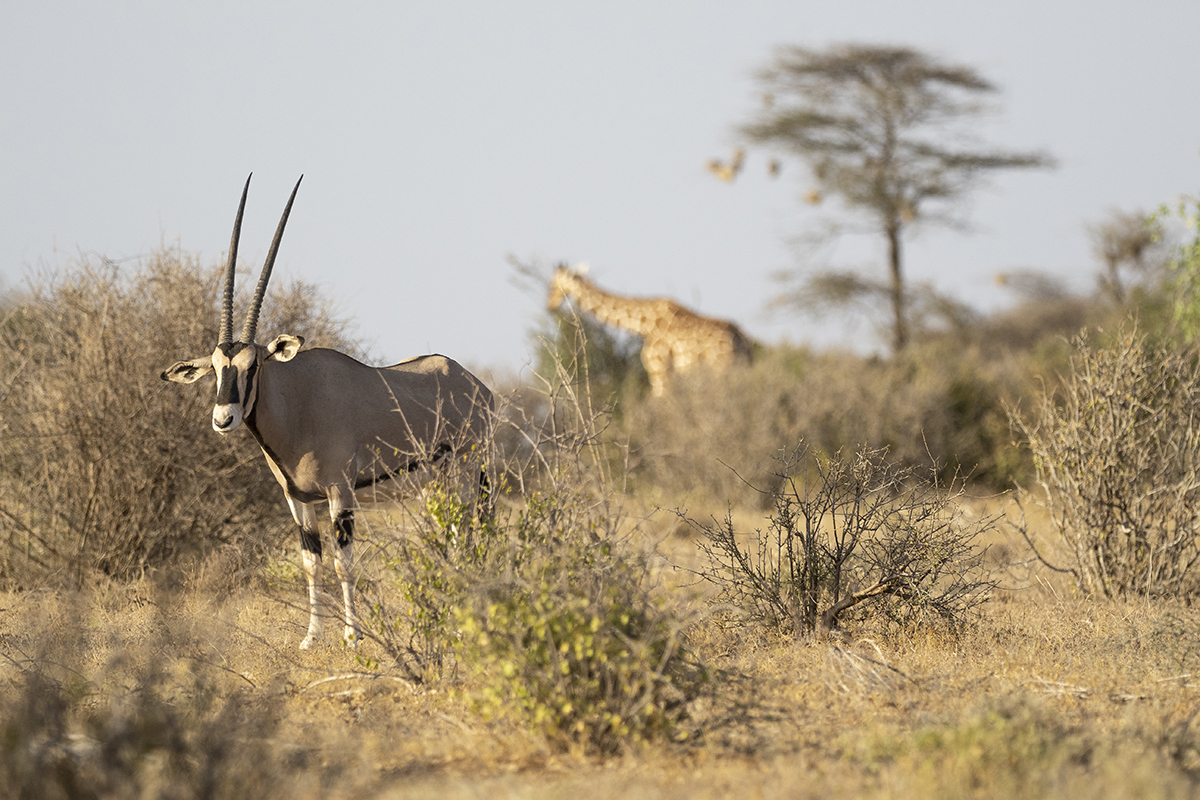
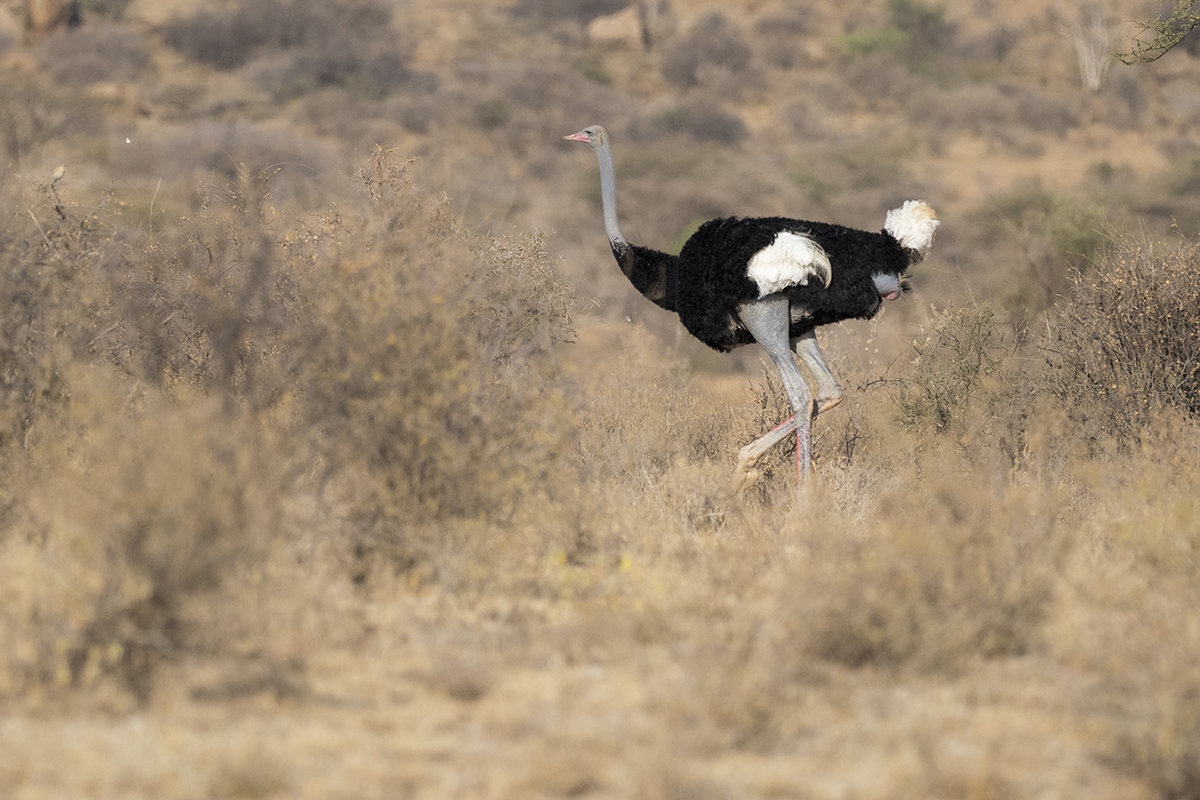
First Afternoon Safari in Samburu
Given the high temperatures and the fact that the sun would not set until around 7 p.m., I began my safari in Samburu at 4:30 p.m., just as the heat started to ease and the light became ideal for photography. One of the great advantages of staying inside the reserve was being able to spot wildlife right from the beginning.
The first thing that struck me was the landscape. The dryness of the terrain, along with the majestic palm trees rising near the Ewaso Ngiro River, created a unique atmosphere. The river itself was completely dry. According to my guide, the park had been suffering from a severe drought for several months, and many animals were dying of thirst.
In this context, the elephants’ ability to locate underground water sources was vital not only for their survival but also for other species. I saw several groups of elephants drinking and cooling off in the holes they had dug.
During this first safari, I also spotted the Special 5. One of the animals that touched me the most were the dik-diks, some of the smallest antelopes in Africa.
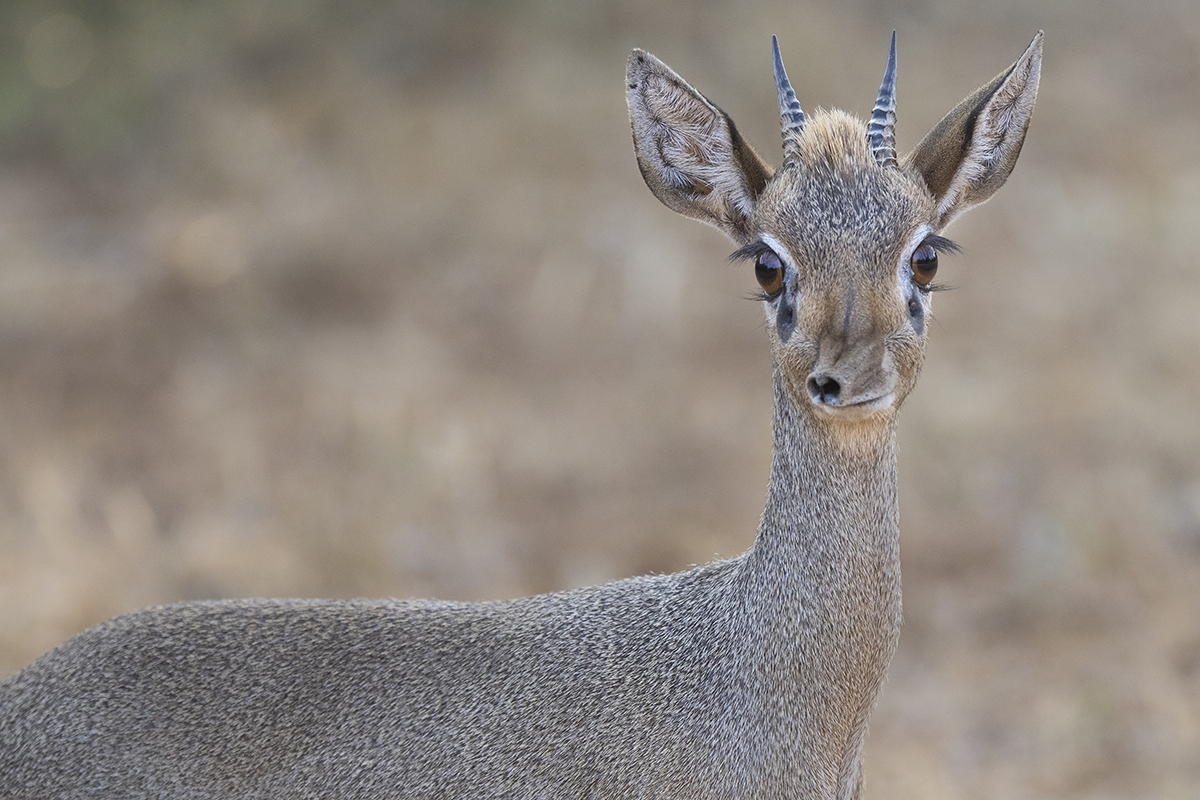

Three Cheetahs and Magical Light in Samburu Reserve
However, the highlight of the first safari came toward the end, when we found several vehicles stopped. This is always a sign of an interesting sighting.
There were three cheetahs that had just caught a Thomson’s gazelle. Seeing cheetahs on a safari in Samburu isn’t common, so I was in awe while watching, with some sadness, as the cheetahs began to devour their prey. But that’s the cycle of life. The cheetahs had to eat to survive.
The scene was incredible, and I couldn’t stop taking photos as the sunset light illuminated the felines. It was a perfect ending to my first day in Samburu National Reserve.

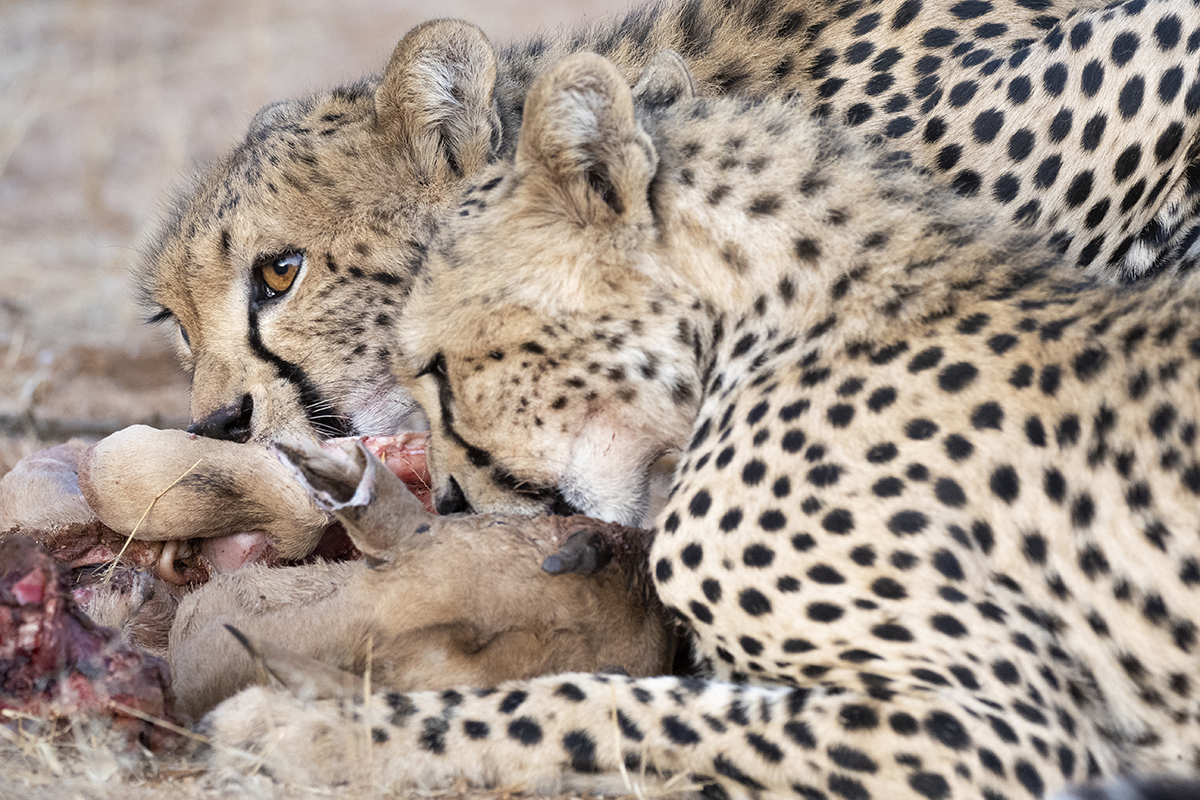
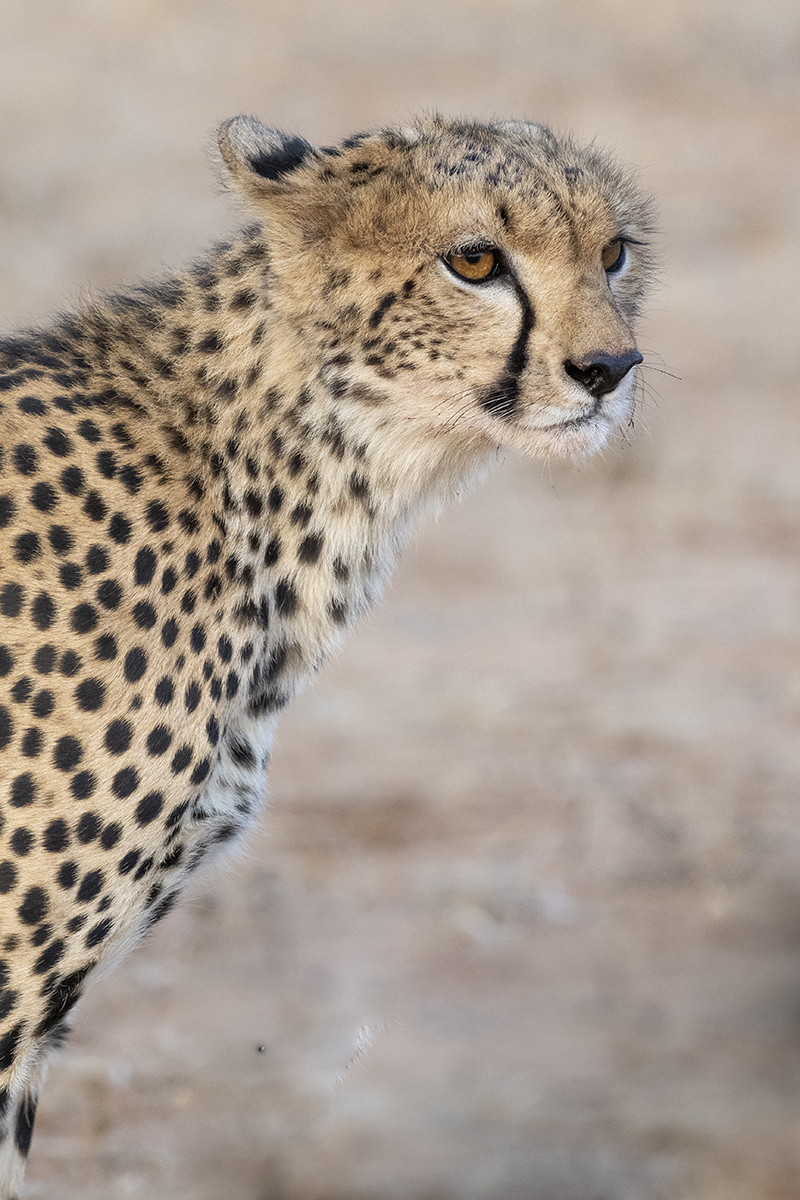
First Morning Safari in Samburu Reserve
Staying inside Samburu Reserve, with only the fabric of the tent separating me from the arid savannah, was an unforgettable experience. Early in the morning, as I was getting ready for breakfast, I could hear elephants and even the roar of a lion.
I started the morning safari shortly after six, just as the sun was rising. Only a few minutes after driving along the dusty tracks of the park, we spotted two jackals patrolling the area in search of carrion. From there, we headed toward the area near the river, where once again there was a fairly large group of elephants.
Soon after, we saw leopard tracks along the same path used by vehicles. But we quickly lost its trail.
The big cats stayed out of sight during the morning safari in Samburu, but I kept seeing other animals. Possibly the highlight of the morning was a large group of reticulated giraffes, around fifteen individuals, which we found in the middle of the morning.
As the heat started to rise, we returned to the lodge for lunch and a bit of rest.

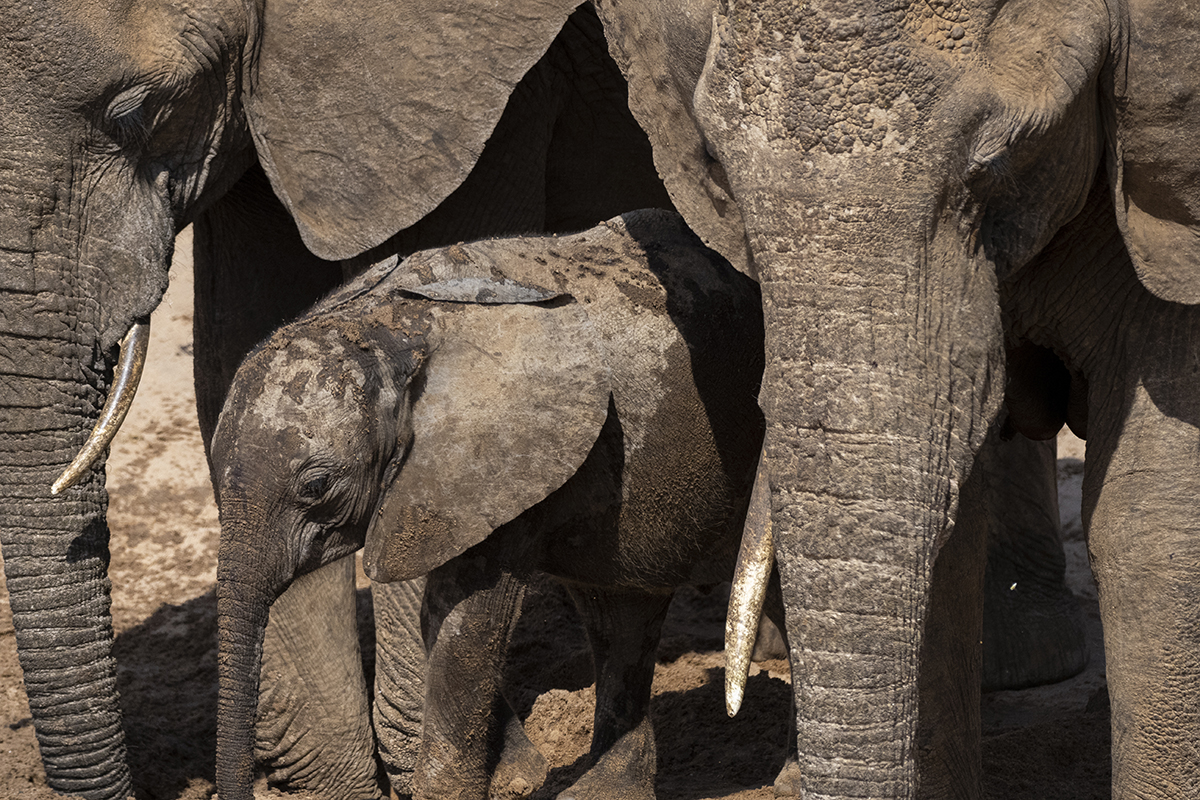
A New Safari in Samburu
In the afternoon, again at 4:30, I went out for another safari in Samburu National Reserve. The goal for the afternoon was to see a big cat. Spotting a leopard in Samburu was one of my dreams, but it did not happen. We saw some tracks, but neither we nor the other vehicles we passed saw any felines.
Traveling during the low season has the great advantage of being much more peaceful, and during sightings of the most iconic animals, there usually aren’t too many vehicles. That makes the experience feel more special. The downside is that with fewer people out searching for animals, it becomes harder to find the more elusive species.
I ended the safari enjoying another beautiful sunset. The golden light at the end of the day made the arid and unique landscape of this Kenyan reserve even more stunning.
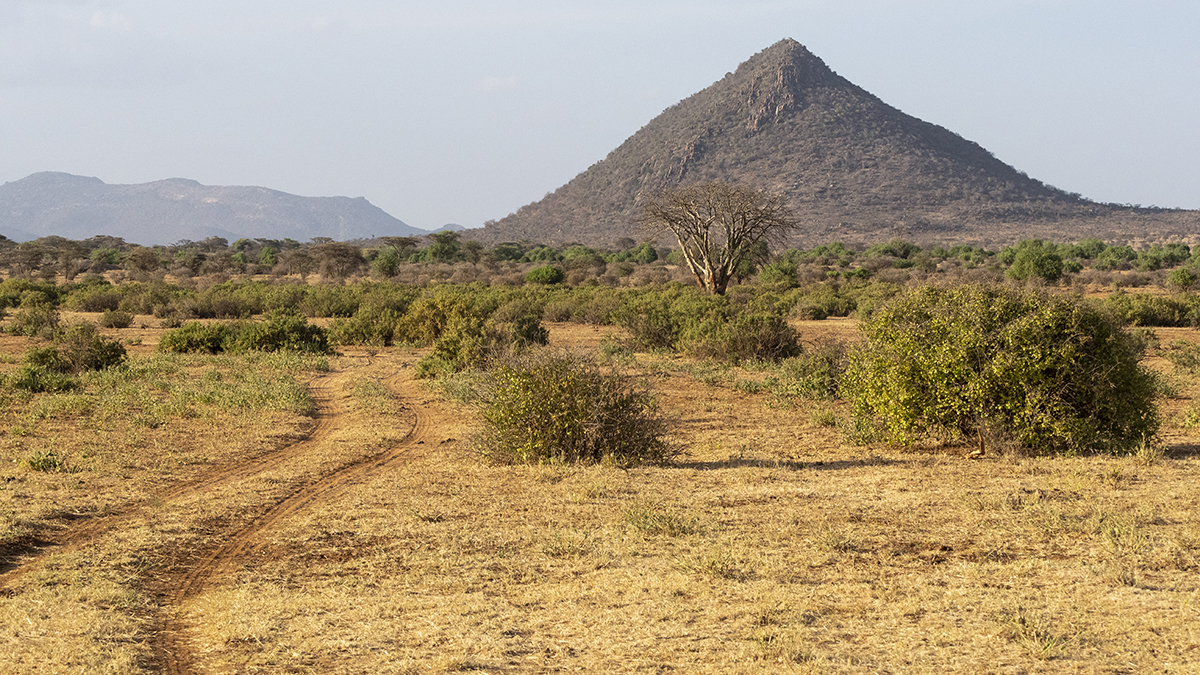

The Last Morning of Safari
At dawn, I began my last safari in Samburu. I was not planning to go for too long, as I wanted to head to Lake Naivasha afterward, and the drive would take about six hours.
Just five minutes from the camp, I once again saw leopard tracks. They were quite confusing, as they went in both directions. It was not at all clear which way the animal had gone, and we were not able to locate it.
From there, we spotted a group of vultures flying low, so we headed toward that area. The reason for the gathering of these scavengers was the carcass of a zebra. Only the remains were left. Just as we were standing there, the sun began to rise over the horizon. Sunrises in Africa are unbeatable…
Just before nine, I ended my safari in Samburu. It was one of the reserves I had most looked forward to visiting, and it did not disappoint. I would have loved to spend another day there, to keep trying my luck with the big cats and continue enjoying the unique landscape of this reserve.

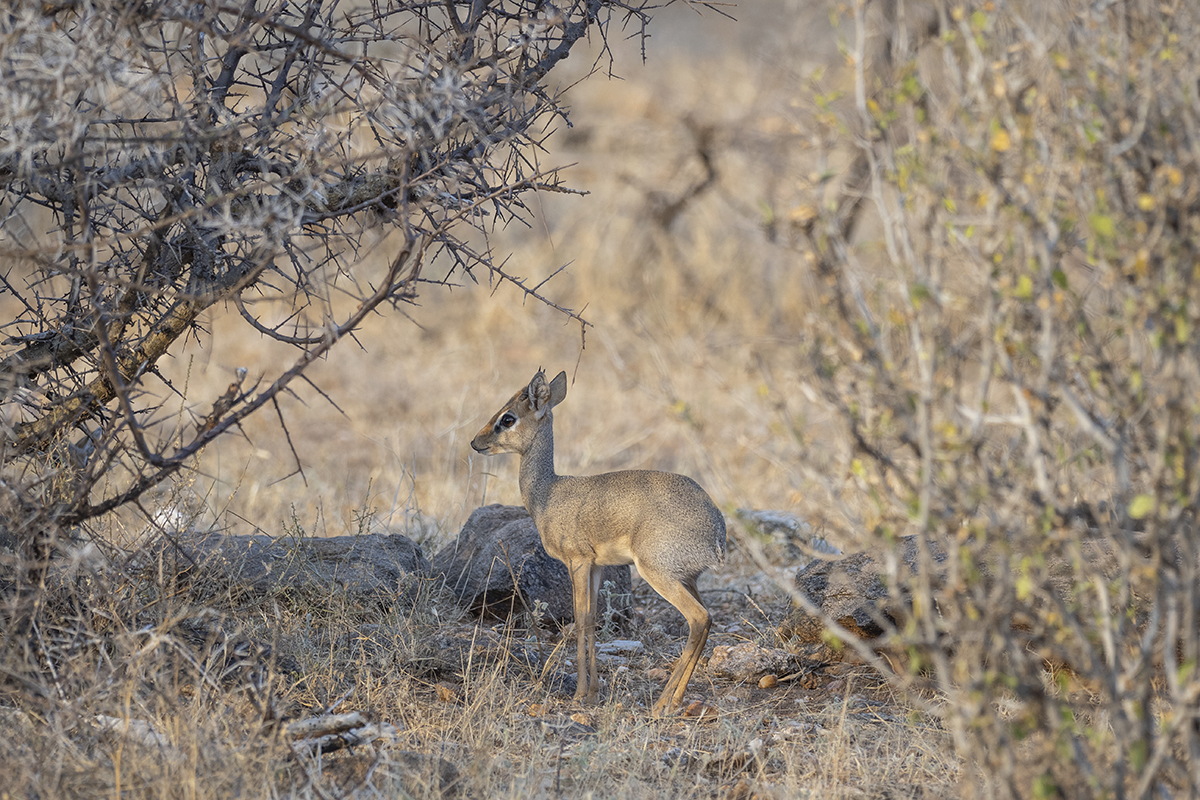
Plan Your Trip to Kenya
🦍 Find the best trips and safaris to Kenya with a local operator here.
✈️ The best flight deals to Kenya here.
🏨 The best prices for accommodations in Kenya here.
🚑 Get your travel insurance with a 7% discount here.
💳 The best card for paying (without fees) and withdrawing money abroad here.




